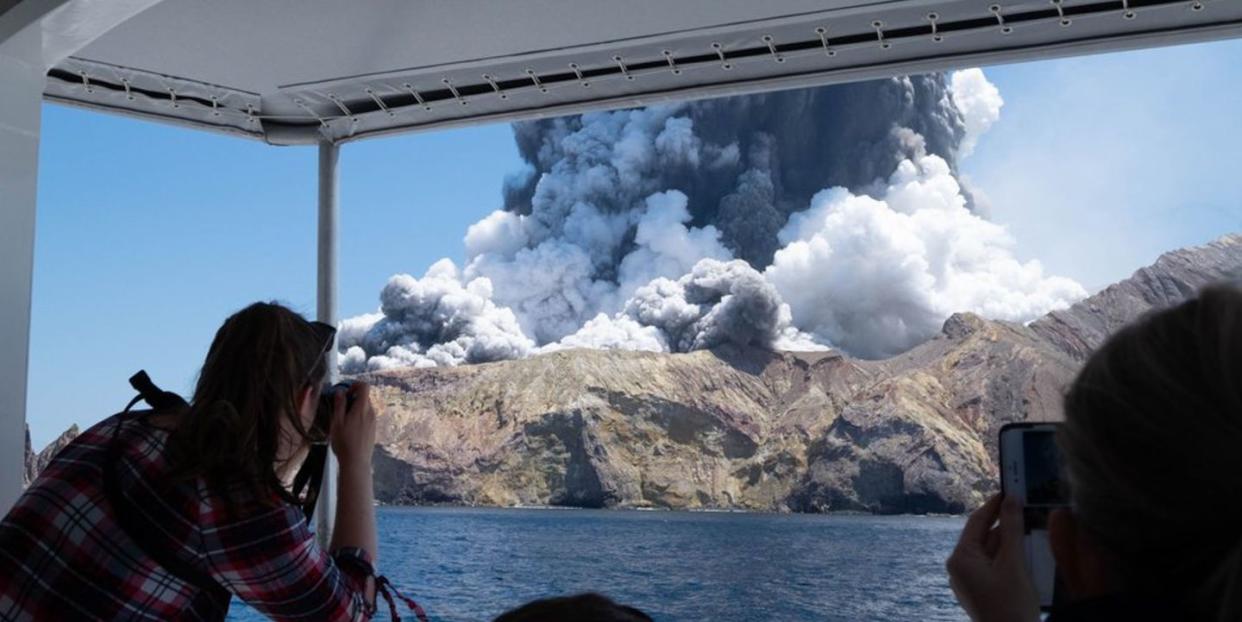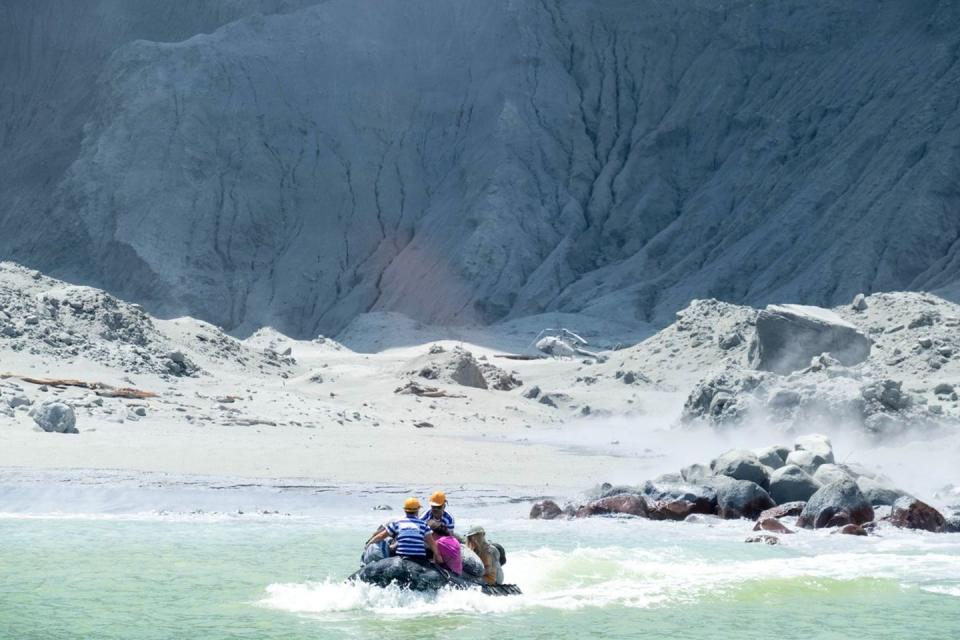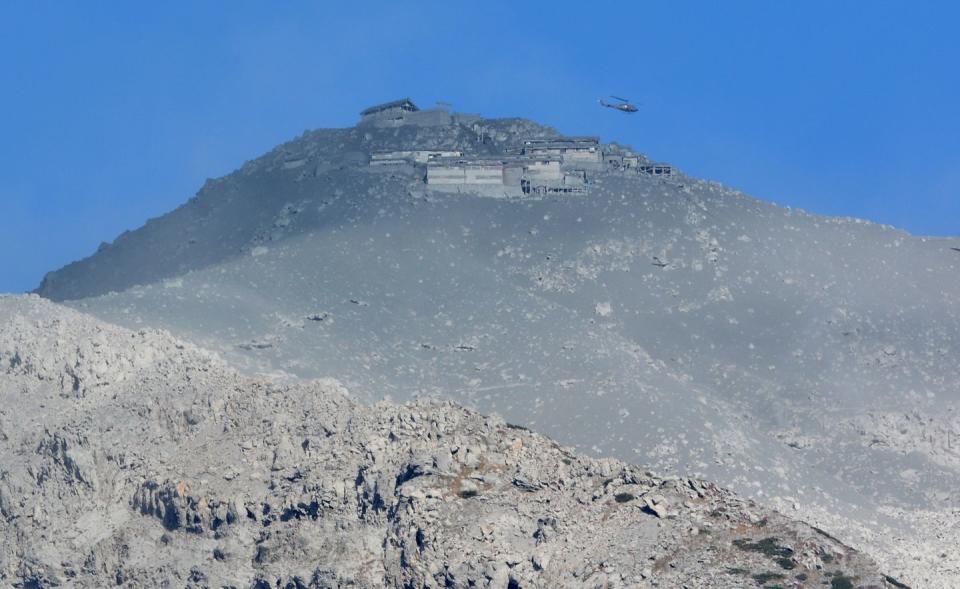Why the White Island Volcano Eruption Was So Dangerous

At least eight tourists were killed and more than 20 were injured on December 9, when White Island, a small volcanic island off the coast of New Zealand, erupted.
The type of eruption, referred to as a wet eruption, is notoriously difficult to predict and prepare for.
The eruption raises concerns about the safety and feasibility of visiting active volcanoes.
On Monday, December 9, New Zealand's White Island volcano erupted seemingly without warning. Within two minutes, a violent cloud of steam, ash, and rock—called a pyroclastic density current—tumbled down the volcano’s flank. A cloud of volcanic ash stretched thousands of feet into the sky.
At the time the volcano erupted—just after 2:00 p.m. local time—47 tourists were scattered along the crater’s edge and down the volcano’s slopes. At press time, eight people have been confirmed dead, 28 are currently being treated, and nine are missing or presumed dead.
"My God, White Island volcano in New Zealand erupted today for first time since 2001. My family and I had gotten off it 20 minutes before, were waiting at our boat about to leave when we saw it," tourist Michael Schade tweeted shortly after the eruption.
My god, White Island volcano in New Zealand erupted today for first time since 2001. My family and I had gotten off it 20 minutes before, were waiting at our boat about to leave when we saw it. Boat ride home tending to people our boat rescued was indescribable. #whiteisland pic.twitter.com/QJwWi12Tvt
— Michael Schade (@sch) December 9, 2019
White Island is New Zealand’s most active volcano, and has periodically erupted since 1976, according to GeoNet, New Zealand’s volcano monitoring organization. On November 18, the organization raised the volcano's alert level from 1 to 2 on its 5-point scale. (It's currently at a level 3, and recovery operations have been paused until the island is deemed safe.)
The volcano is considered a “wet” volcano, meaning the magma stored below is often in contact with water that seeps deep below the volcano. Wet volcanoes like White Island are susceptible to phreatic eruptions—a type of eruption driven by superheated gas and steam.
“Most of the time, these explosions involve energy, but not magma or new molten materials,” volcanologist Bruce Houghton, of the University of Hawaii at Manoa, tells Popular Mechanics.

Gases and steam seep up from pools of magma deep below the volcano and can become trapped beneath a thin layer of rock. In some cases, magma below the volcano interacts with cold groundwater or even seawater that has seeped into the earth. Once enough pressure builds beneath that rock, those gases can burst through, causing a potentially deadly explosion.
Due to their unpredictable nature, these types of eruptions are often called “Blue Sky Eruptions.” They seemingly belch out steam, ash, and rock out of the blue.
Multiple deadly eruptions that have occurred in the past several years fall into this category. The 2014 eruption of Japan’s Ontake, which killed 63 hikers, was a wet eruption, according to volcanologist Loÿc Vanderkluysen, of Drexel University.
New Zealand is home to several wet volcanoes. Phreatic eruptions are common at Ruapehu, which erupted in 2007, injuring a hiker who was near the summit.

“These phreatic or phreatomagmatic eruptions are hard to predict,” Vanderkluysen tells Popular Mechanics. “We don’t have precursors because we don’t have the tools to monitor them.”
In some instances, tracking the activity of magmatic eruptions—where molten rock rises from deep within Earth’s mantle—can be more straightforward. Volcanologists are able to monitor earthquakes, ground deformation, and the emission of gases from the volcano’s vent as magma pushes up from below. For phreatic eruptions, the warning signs are much more difficult to discern.
“There’s no warning on any timescale that would be useful to move people away,” says Houghton. “What we see at White Island is a much more blurred signature of all those things.”
Monday’s eruption could indicate that more activity is imminent. Vanderkluysen notes that in the past decade, these phreatic eruptions have acted as precursors for more forceful magmatic eruptions.
White Island’s eruption raises important questions about the safety of visiting active volcanic systems. “Globally, we’ve lost the three biggest volcano attractions in the last year for different reasons,” said Houghton.
Last year, Kilauea volcano’s famed lava lake in Hawaii and increasing eruptions at Stromboli volcano in Italy shuttered tours there. White Island is one of the most popular spots to witness volcanic activity in New Zealand.
“There’s a real tourism market—people want to go there and see it—and the local economy becomes increasingly dependent on that tourism,” says Houghton.
In order to visit these regions safely, experts recommend doing a bit of homework before setting out. “I understand that a majority of people want to be entertained and don’t want to read a treatise on volcanology before visiting volcanoes, but most agencies will have the alert level posted,” Vanderkluysen says.
In the U.S., for example, the U.S. Geological Survey posts frequent alerts about the country’s more than 160 active volcanoes. MAGMA Indonesia, the island chain’s volcanic monitoring organization, posts the status of active volcanoes on its website. And in New Zealand, GeoNet uses the NZ Volcanic Alert Level System to warn tourists of potential hazards.
“If you see that the alert level is not green, read what the potential hazards are and at least be aware of what to do or make informed decisions about what you might encounter,” Vanderkluysen says.
You Might Also Like

